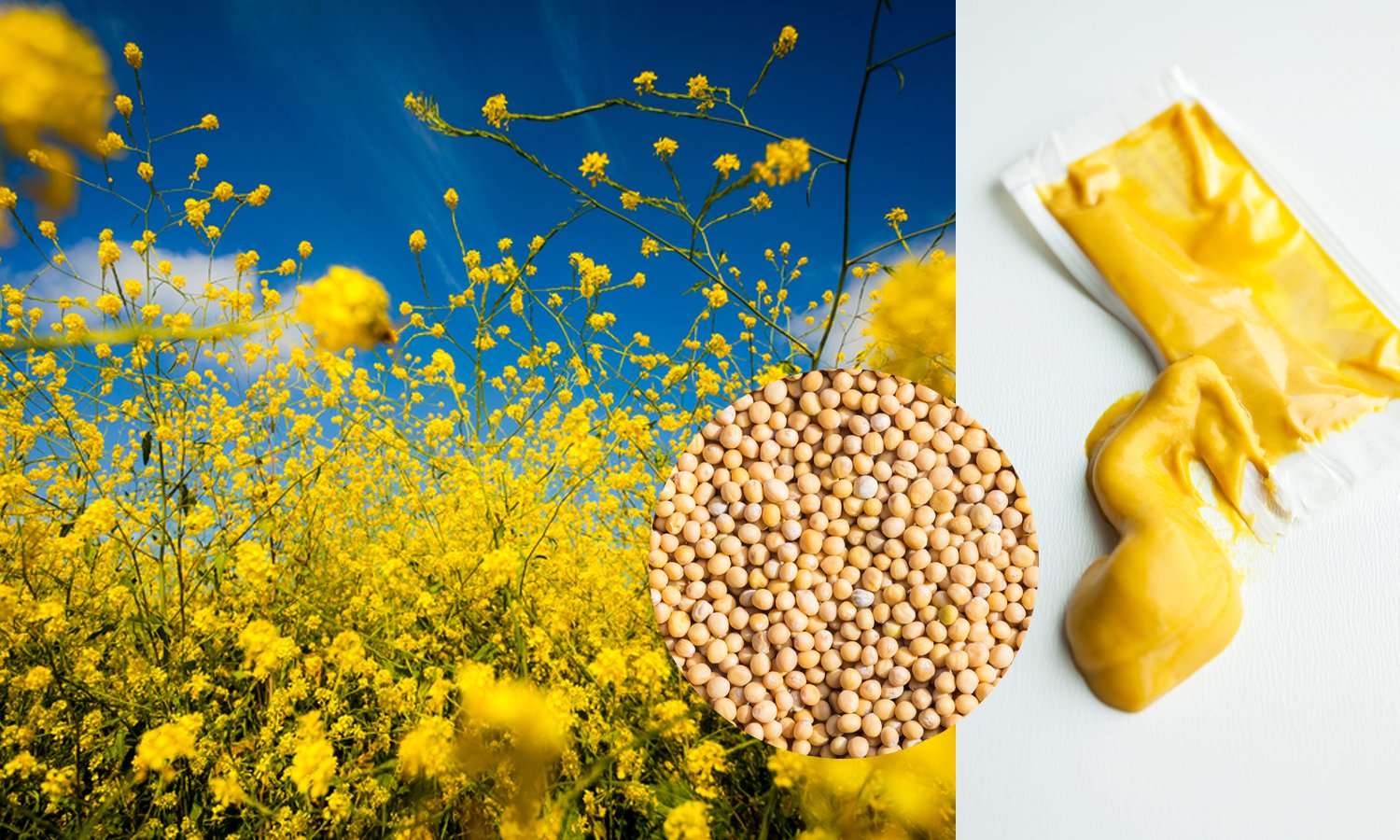Tips for Navigating a Mustard Allergy
Mustard allergies are garnering more attention globally than in years past and have seen a significant increase in prevalence in areas that commonly use mustard in their cuisine—think Europe, Canada, and India. Mustard is considered a ”Priority Allergen” in Canada and is included in the top 14 allergens that have to be labeled for in the United Kingdom. Unfortunately, mustard allergy sufferers in the U.S. may have a challenging time navigating their allergy because it hasn’t yet been recognized as a major food allergen in the U.S.
Luckily, the crew here at Allergy Amulet has you covered! Whether you're in the U.S. or abroad, we'll review everything you need to know to navigate a mustard allergy: what proteins cause the allergy, how to recognize symptoms, and how to best navigate food experiences with a mustard allergy.
What Causes a Reaction to Mustard?
Mustard is a plant that belongs to the Brassicaceae family. This family includes other plants like cabbage, rapeseed (canola), radish, and broccoli.
There are two primary varieties of mustard: brown mustard (Indian), which is found natively in the Himalayan region, and yellow mustard (white), which originates in the Mediterranean. Both varieties have unique proteins that may cause an allergic reaction. Brown mustard contains Bra j 1, a 2S seed storage protein also found in nuts and seeds. Yellow mustard contains four allergenic proteins, profiled as Sin a 1, 2, 3, and 4. Learn more about this here.
Symptoms of a Mustard Allergy and How They Affect You
Like other food allergy reactions, mustard allergies may present with a variety of symptoms including, but not limited to:
Itching, hives, or skin rash
Trouble breathing, wheezing, and nasal congestion
Feeling dizzy, faint, or lightheaded
Nausea, vomiting, diarrhea, and abdominal pain
Swelling of the throat, face, tongue, and lips
Severe reactions to mustard can cause anaphylaxis, which can be life-threatening. If you or a loved one are experiencing what you think may be an anaphylactic reaction to mustard, seek medical attention immediately.
I Have a Mustard Allergy—Should I Avoid Canola Oil?
Mustard and canola are both members of the Brassicaceae family. The name “canola” is derived from “Canadian oil, low (erucic) acid” and refers to the oil’s quality, not necessarily the seed species that produced it. Canola oil is made using both canola seed (Brassica napus L. and Brassica rapa L.) and canola-quality mustard seed (Brassica juncea (L.) Czern.).
However, the only canola product commonly used in food is canola oil. This oil is typically highly refined and doesn’t contain appreciable amounts of protein. Interested in learning more about the allergenicity of protein? Read our blog about peanut oil and if it causes allergic reactions.
That said, pressed canola oil—also known as cold-pressed or extruded rapeseed oil—can contain measurable amounts of allergenic protein and should be avoided by those with a mustard allergy.
Avoiding Mustard and Tips for Living with a Mustard Allergy
In areas where mustard is considered a top allergen, like the U.K. and Canada, mustard and mustard-containing products must be labeled on packaged products to alert consumers of its presence. However, in the U.S., where mustard is not on the list of top allergens, identifying mustard in products or at restaurants can be trickier.
It's important to note that in the U.S., many spice mixes or blended spices appear innocuous on a product's label but can contain mustard. They should be avoided or eaten with extreme caution. Examples of foods that may contain mustard are:
Condiments, especially vinegar-based preserves (ketchup and barbecue sauce)
Salad dressings (vinaigrettes and dips on crudité platters)
Spices, flavorings, or seasonings
Curries and chutneys
Pickles and other pickled products
Vegetables with vinegar
Dehydrated soups
Processed meats (sausages, salami, hamburgers/steakettes, and some fast-food products)
Potato salads
Cross-contact in the U.S. is especially hard to identify as manufacturers aren’t required to label for the possibility of mustard in their products (e.g., "May contain..." or "Made in a factory that also processes..."). Your best bet for identifying if mustard is processed alongside other products is to contact the manufacturer or parent company directly.
We hope this article helps to educate and empower you to navigate a mustard allergy with a bit more ease! Do you have any tried-and-true tips for managing a mustard allergy we haven’t mentioned? Drop them in the comments below!
— Scott and the Allergy Amulet Team

